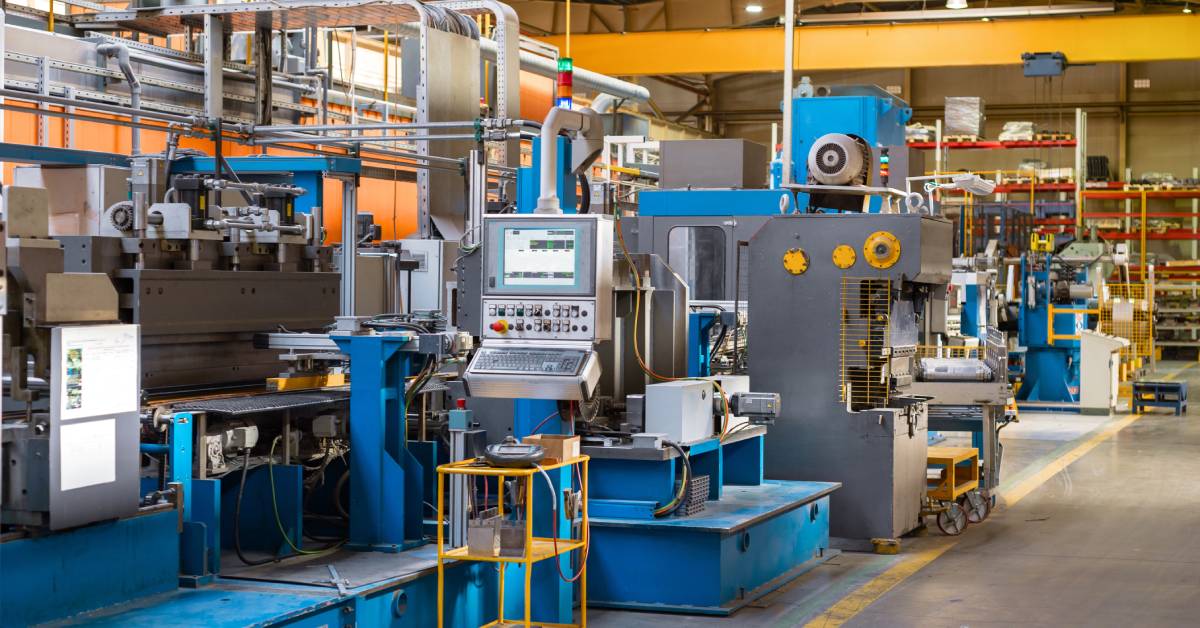Posted by RCP on 28th Jan 2025
Benefits of Environmental Monitoring in Industrial Settings
Industrial settings operate in highly dynamic and sensitive environments where maintaining optimal conditions is critical. Environmental monitoring plays an indispensable role in this process. Understanding the benefits of environmental monitoring in industrial settings can help purchasing agents and inventory buyers make informed decisions when selecting the right monitoring solutions for their facilities.
Ensuring Product Quality and Consistency
Environmental monitoring is vital for maintaining product quality and consistency, especially in industries like pharmaceuticals, food processing, and electronics manufacturing. Variations in temperature, humidity, or air quality can significantly impact the integrity of raw materials and finished products. For example, high humidity levels can lead to corrosion or spoilage, while fluctuations in temperature can alter chemical compositions or render products unusable.
By implementing advanced monitoring systems, industrial facilities can track environmental conditions in real-time and respond promptly to deviations. Continuous monitoring helps production environments stay within specified parameters, minimizing the risk of defective or inconsistent products. For inventory buyers, investing in reliable environmental monitoring tools can reduce product losses and maintain customer satisfaction by consistently delivering high-quality goods.
Protecting Equipment and Infrastructure

Industrial equipment and infrastructure are substantial investments that require diligent care and maintenance. Environmental monitoring helps safeguard these assets by detecting conditions that may lead to premature wear or damage. For instance, excessive humidity can cause rust and corrosion in machinery, while extreme temperatures can affect the performance and longevity of sensitive equipment.
Monitoring systems provide alerts when environmental factors deviate from acceptable ranges, allowing facilities to address potential problems before they escalate. This proactive approach reduces downtime, prevents costly repairs, and extends the lifespan of critical equipment. Purchasing agents should consider these long-term savings when selecting monitoring solutions, as they can significantly lower maintenance costs and improve operational efficiency.
Enhancing Worker Safety and Comfort
Maintaining a safe and comfortable work environment is a top priority for industrial operations. Environmental monitoring systems play a crucial role in protecting workers from hazardous conditions such as poor air quality, extreme temperatures, or exposure to harmful chemicals. For example, monitoring air quality can help identify the presence of toxic gases or particulate matter, enabling facilities to take immediate action to protect employees.
Additionally, maintaining a stable indoor climate can improve worker comfort and productivity. High temperatures or humidity levels can cause discomfort and fatigue, leading to decreased efficiency and increased risk of accidents. With accurate environmental data, industrial facilities can implement measures to create a healthier and more comfortable workplace, increasing employee satisfaction and productivity levels.
Supporting Regulatory Compliance
Many industries operate under strict regulations that require facilities to maintain specific environmental conditions. Non-compliance can result in fines, legal liabilities, and damage to a company’s reputation. Environmental monitoring helps facilities meet regulatory requirements by providing accurate and verifiable data on conditions such as temperature, humidity, and air quality.
Automated monitoring systems generate detailed records and reports that companies can use during audits or inspections to demonstrate compliance. For purchasing agents and inventory buyers, selecting monitoring solutions with robust data logging capabilities is essential to meet these regulatory demands. Advanced tools can simplify the compliance process and reduce the risk of penalties, ultimately protecting the organization’s bottom line.
Reducing Energy Consumption and Costs
Environmental monitoring contributes to energy efficiency by optimizing the use of heating, cooling, and ventilation systems. By tracking temperature and humidity levels in real-time, facilities can adjust these systems to maintain optimal conditions without overuse. For example, monitoring data can help identify areas where cooling systems are working harder than necessary, allowing for adjustments that reduce energy consumption.
Lower energy usage translates into significant cost savings for industrial facilities. It also supports a company’s sustainability goals by reducing the facility’s carbon footprint. Inventory buyers can support these initiatives by investing in energy-efficient monitoring tools that provide accurate data while minimizing power consumption.
Enabling Predictive Maintenance

Predictive maintenance is a proactive approach that uses data to anticipate equipment failures before they occur. Environmental monitoring plays a key role in this strategy by identifying conditions that may contribute to wear and tear or malfunction. For example, fluctuations in temperature or humidity can stress certain components, leading to premature failure if left unaddressed.
By integrating environmental monitoring data with predictive maintenance programs, facilities can schedule maintenance activities more effectively and avoid unexpected downtime. This approach reduces repair costs and improves equipment reliability. Purchasing agents should consider monitoring systems that integrate seamlessly with predictive maintenance tools, as these solutions can maximize the value of both technologies.
Building Resilience Against External Threats
Industrial facilities are often exposed to external environmental threats such as extreme weather events, power outages, or natural disasters. Environmental monitoring provides the data needed to prepare for and respond to these challenges effectively. For example, monitoring systems can alert facilities to rising temperatures during a heatwave or detect water intrusion during heavy rainfall.
This data enables facilities to implement contingency plans, such as adjusting climate control systems or securing sensitive equipment, to minimize disruptions and damage. Inventory buyers should prioritize monitoring solutions with advanced alerting and remote access capabilities, helping facilities respond quickly to changing conditions.
Facilitating Remote Monitoring and Management
Remote monitoring and management have become essential in today’s industrial landscape. Environmental monitoring systems equipped with remote access capabilities allow operators to track conditions and manage equipment from anywhere. This feature benefits facilities with multiple locations and operations that require 24/7 oversight.
Remote monitoring provides real-time data and alerts, enabling swift responses to environmental changes or equipment malfunctions. For instance, if a cooling system fails during off-hours, remote monitoring systems can notify personnel immediately, allowing them to take corrective action before significant damage occurs.
This capability reduces the need for on-site staff at all times and ensures uninterrupted operations. Inventory buyers should prioritize systems with remote monitoring features to enhance operational flexibility and minimize response times. By enabling remote management, facilities can improve efficiency, reduce labor costs, and maintain a competitive edge in their industries.
Environmental Monitoring: A Critical Investment for Industrial Success
The benefits of environmental monitoring in industrial settings extend across every aspect of operations, from ensuring product quality to protecting workers and reducing costs. For purchasing agents and inventory buyers, selecting the right monitoring tools is a critical investment that delivers long-term value. Systems that support regulatory compliance, predictive maintenance, and energy efficiency provide a solid foundation for achieving operational excellence.
As you evaluate monitoring solutions, consider their ability to generate reliable data and integrate with existing systems. Tools like temperature chart recorder paper from Recorders Charts & Pens can complement digital solutions by providing physical records of environmental conditions, offering an additional layer of documentation and security. By prioritizing environmental monitoring, industrial facilities can enhance productivity, protect assets, and build resilience for the future.

